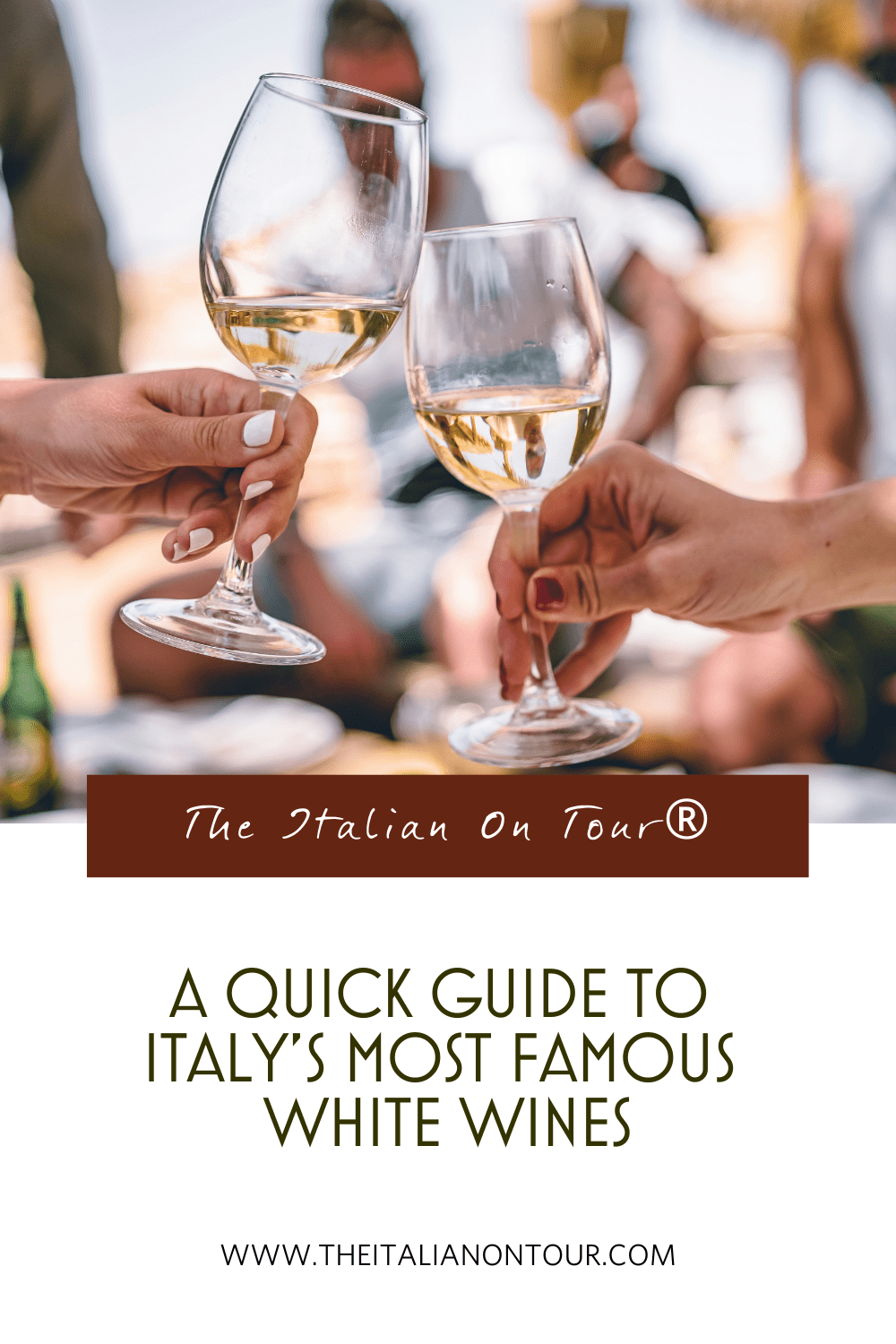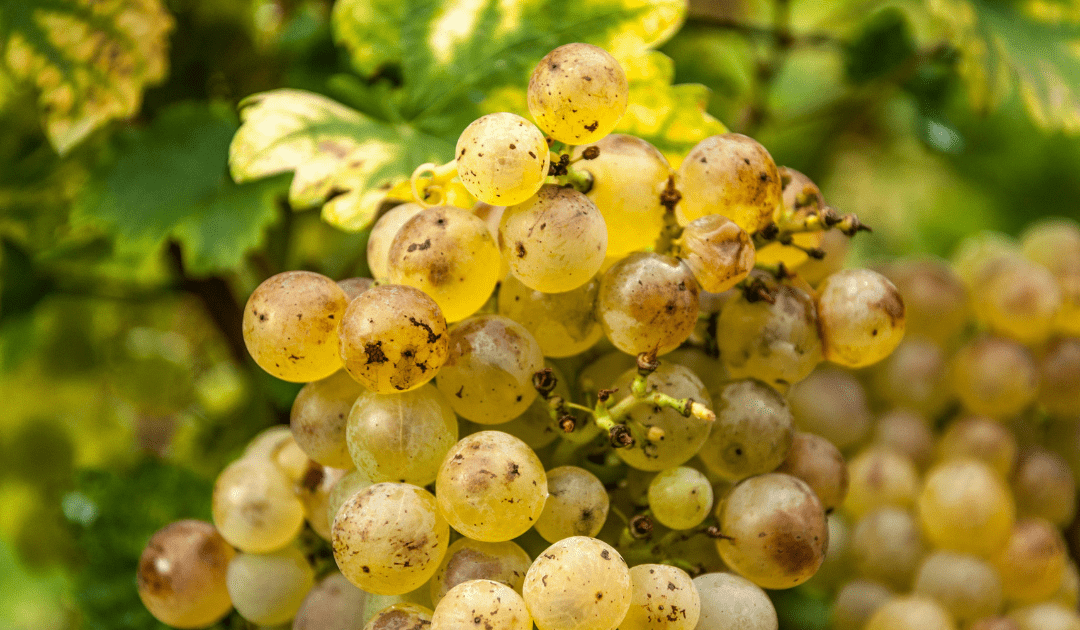Once considered primarily a “red wine” country, the roles have reversed in Italian wine culture, with white wine rapidly rising in popularity in the past few decades alone.
According to the International Organization of Vine and Wine, white wine consumption has grown at a “relatively fast pace” since 2010. Production and consumption for white wines have increased, while red wines have notably decreased, a shift from past trends.
In 2021, white wine accounted for 43% of global wine consumption. Italy is the world’s largest producer of white wines, accounting for 21.1% of global production. Ten of Italy’s twenty regions now produce more than 50% white wines, with top regions including Veneto, Friuli-Veenzia-Giulia, Marche, Lazio, Puglia, and Sicily.
Often containing fewer calories and less alcohol by volume than red wines, white wine’s tart and fresh profile appeals to many people, especially younger generations, who are increasingly looking for low alcohol content and less structured profiles. In this quick guide, we’ll explore Italy’s most popular white wines and their differences.
Did you know that wine is actually good for your health? Studies have shown that moderate consumption of red wine can contribute to a decreased risk of heart disease, most likely due to the antioxidants it contains. These health benefits have contributed to red wine’s popularity, particularly in America, with 49% preferring red wine to white wine or other types of wine.
Orvieto
Accounting for around 80% of Umbria’s vineyard areas, Orvieto is the region’s best-known wine and one of Italy’s most highly regarded white wines. In 1971, Orvieto officially earned its DOC ranking – learn more about key wine terms you need to know here.
While red and sparkling wines are produced in Orvieto, only white wine can be bottled under the Orvieto DOC designation. Most of the production region is in Umbria, but some cross into the neighboring region of Lazio.
Umbria is Italy’s best-kept-secret wine region – exactly why we decided to base a ten-day, small-group wine tour just two hours away from Orvieto in Gubbio! While Orvieto isn’t specifically featured, we’ll visit three award-winning, small-batch, family-owned wineries in Umbria and Le Marche for tastings of some of Italy’s best wines.
The DOC Orvieto Classico wine is made primarily from Grechetto and Trebbiano grapes. Often compared to unoaked Chardonnay or Pinot Grigio, Orvieto is a dry, fruity wine with a slight mineral taste that pairs well with seafood, sushi, white pizza, or cheeses.
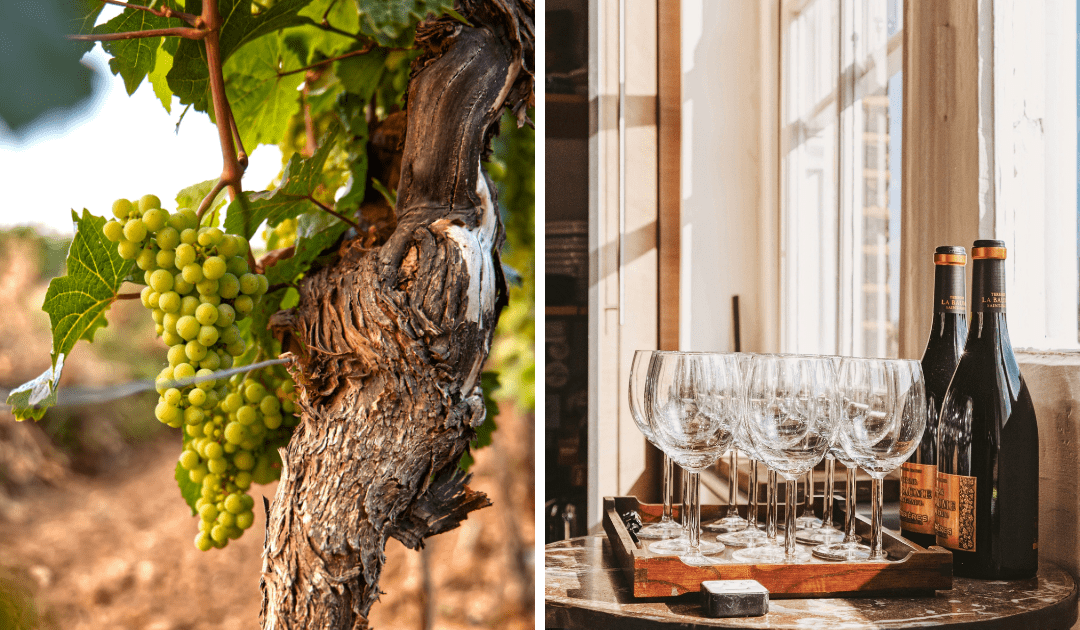
Pinot Grigio
Pinot Grigio is easily one of the most respected and recognizable names in the world of wine. With the grape having heritage in Italy and France, the names “Pinot Grigio” and “Pino Gris” can be used interchangeably.
This fruity white wine is considered one of the great “grey” wines – falling into a category that is neither red nor white. While the grape has been cloned many times to adapt to various weather conditions, it generally favors colder climates with fewer sun hours. For that reason, you’ll never see Pinot Grigio grown in the southern regions of Italy!
Italy has become the largest producer of Pinot Grigio in the past century, with 25,000 hectares cultivated. Over 40% of the world’s total Pinot Grigio is made in Italy, with 85% of that made in the Delle Venezie DOC, which covers Veneto, Trento, and Friuli Venezia. It’s estimated that this region produces around 250 million bottles of Pinot Grigio annually, second only to Prosecco!
The Venetian region is one of Italy’s most important wine regions, producing an estimated one in five bottles of Italian wine.

Trebbiano
Trebbiano is one of Italy’s most popular white varieties, especially in the central regions of Tuscany, Umbria, and Abruzzo.
Trebbiano shares a common origin with other grapes in the Trebbiano family, which has been known in Italy since Roman times and likely earlier by the Etruscans. The name Trebbiano derives from the Latin “treble,” meaning farm.
Trebbiano has been cloned many times over the centuries, changing its original nature but never erasing the essential characteristics that made this grape so successful in Italy and abroad. Trebbiano Toscano was brought to France under the name “Ugni Blanc” and used to produce Cognac and Armagnac.
Trebbiano is unique because its high yields do not affect the quality of its wine. The grape is often left free to grow with little pruning and control. This is also one of the reasons why Trebbiano is even more popular than Sangiovese in Tuscany in terms of hectares grown.
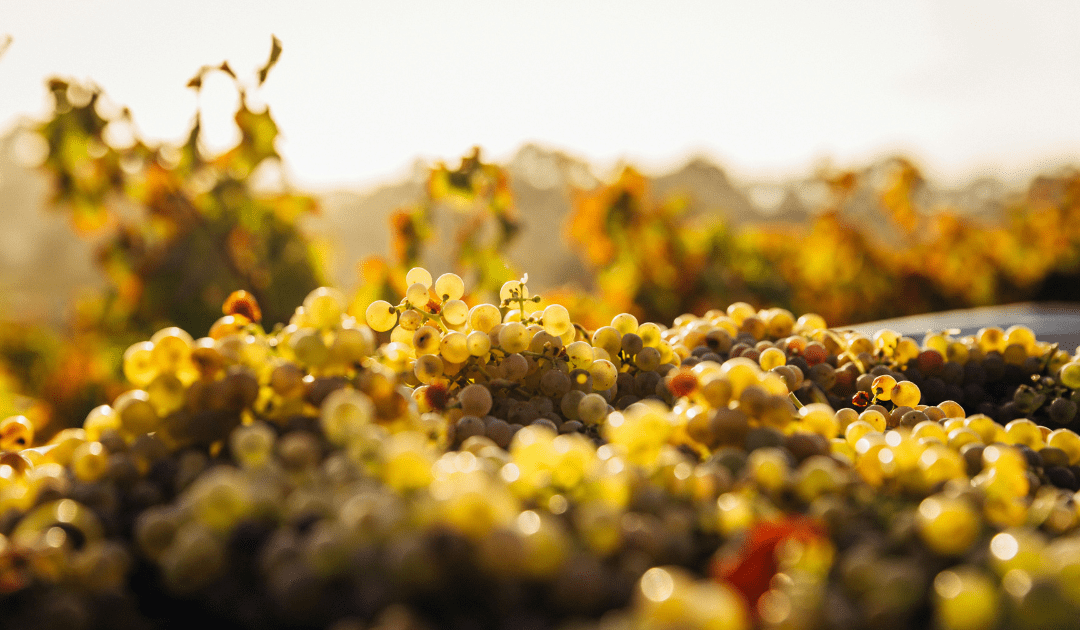
Vin Santo
No trip to Italy would be complete without Biscotti dipped in a glass of Vin Santo! Vin Santo, or “holy wine,” is a typically sweet dessert wine made primarily in Tuscany and parts of Umbria and Marche. This unique white wine is widely beloved for its intense hazelnut and caramel flavors.
In the regions mentioned above, Vin Santo is made with a blend of Trebbiano and Malvasia grapes. Vin Santo is characterized by its rich amber color and can be categorized as one of the “straw wines.”
Known for its unique production process, Vin Santo is fermented in small wooden barrels and aged for at least three years. Because the barrels are never filled to the top, the wine is exposed to the air and subjected to varying temperatures, which results in its nutty, caramel flavor and golden amber color.
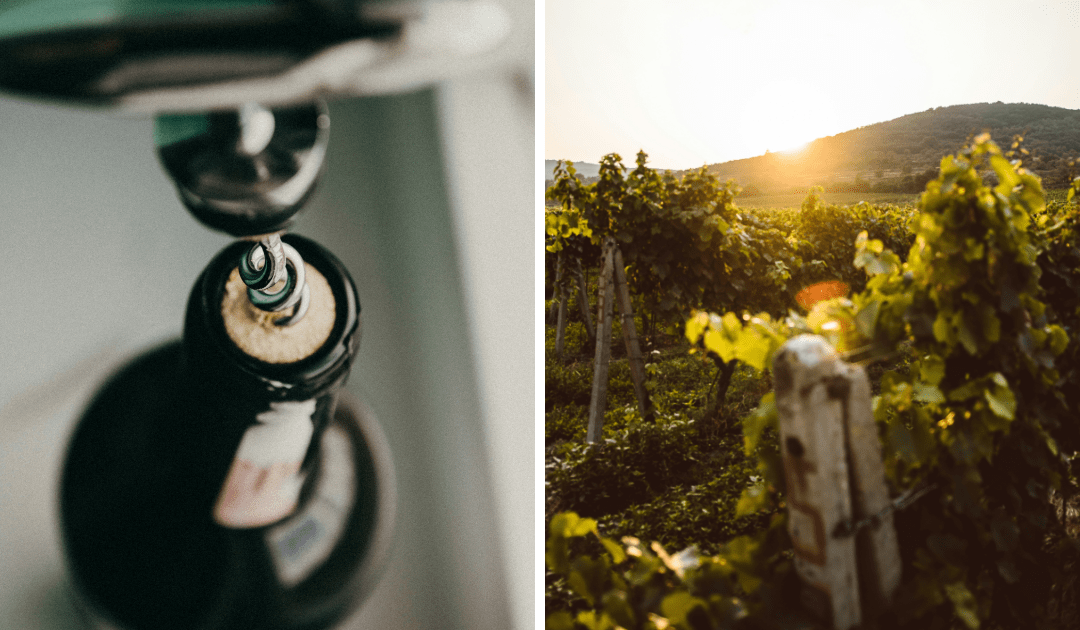
Fiano
Fiano is an age-worthy Southern Italian favorite grown in Campania. The wine’s rich, waxy texture matches well with white meats. While its historical home is Campania, particularly in Avellino, Fiano is also grown in Sicily, where it’s used in still and sparkling wines.
Fiano wines, especially those from Avellino, can be consumed young or aged for a few years. The best examples gain depth and complexity over time, shifting towards nuttier, more honeyed flavors.
This grape is loved for its aromatic richness and ability to maintain freshness, even in the warm climates of southern Italy.
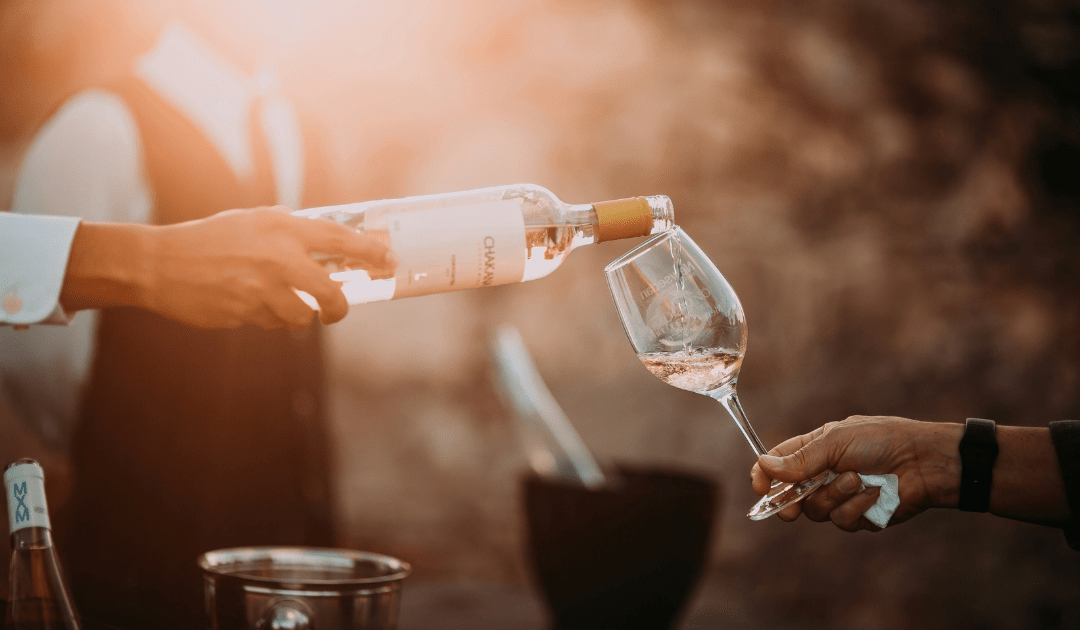
Moscato
Made from the Muscat grape, one of the world’s oldest and most versatile grape varieties, Moscato is a sweet, aromatic wine often enjoyed with dessert.
Light-bodied and with a low alcohol content, Moscato is often slightly sparkling and has tasting notes of peaches, citrus, honey, and pineapple.
The most famous style of Moscato is the Moscato d’Asti, made in the Asti region of Piedmont and carrying a DOCG title. The Asti Spumante also carries a DOCG title and tends to be sweeter and more bubbly than the traditional variety.
Thanks to its approachable, sweet, and fruity character, Moscato has surged in popularity over recent years, especially in the United States. Due to its easy-to-like flavor profile and low alcohol content, it’s often seen as an entry-level wine for new wine drinkers.
Verdicchio
Arguably one of Italy’s best grape varieties and produced primarily in Le Marche, Verdicchio’s crisp acidity and lemon overtones earn it a spot amongst the top white wines of Italy. With a history dating back to the Roman era, Verdicchio can age gracefully for several years and develop complex flavors of honey, almond, and herbs.
Depending on the winemaking style, Verdicchio wines can range from light and crisp to medium-bodied. They often have a vibrant acidity that gives them a refreshing quality. Some examples, especially those from premium producers, have a creamy texture due to aging on the lees (the sediment that forms during fermentation), adding complexity.
Verdicchio has two main appellations:
Verdicchio dei Castelli di Jesi DOC
The most famous Verdicchio, this DOC produces a wide range of styles, from light and fresh to complex, aged wines. The production zone includes the hilly territory surrounding the town of Jesi in the province of Ancona, featuring several medieval fortified villages.
Verdicchio di Matelica DOC
Produced further inland than Verdicchio De Castelli Jesi, these wines tend to have more body and structure and higher aging potential. The vineyards in the production zone are landlocked and located on the slopes of the Apennines in the Macerata and Ancona provinces.
On the Italy Uncorked tour, you’ll taste Verdicchio di Castelli Jesi with Le Marche’s Top Wine Producer, where you’ll learn about the latest innovations in wine production and dine on a curated Seafood tasting menu – while you’re looking out over the gorgeous hills of Castelli di Jesi!
You’ll also visit the city of Matelica for a private walking tour to uncover everything you won’t find in the guidebooks, from the city’s silk makers to the underground Ancient Roman ruins! You’ll also visit a regional Enoteca to taste the city’s flagship wine.
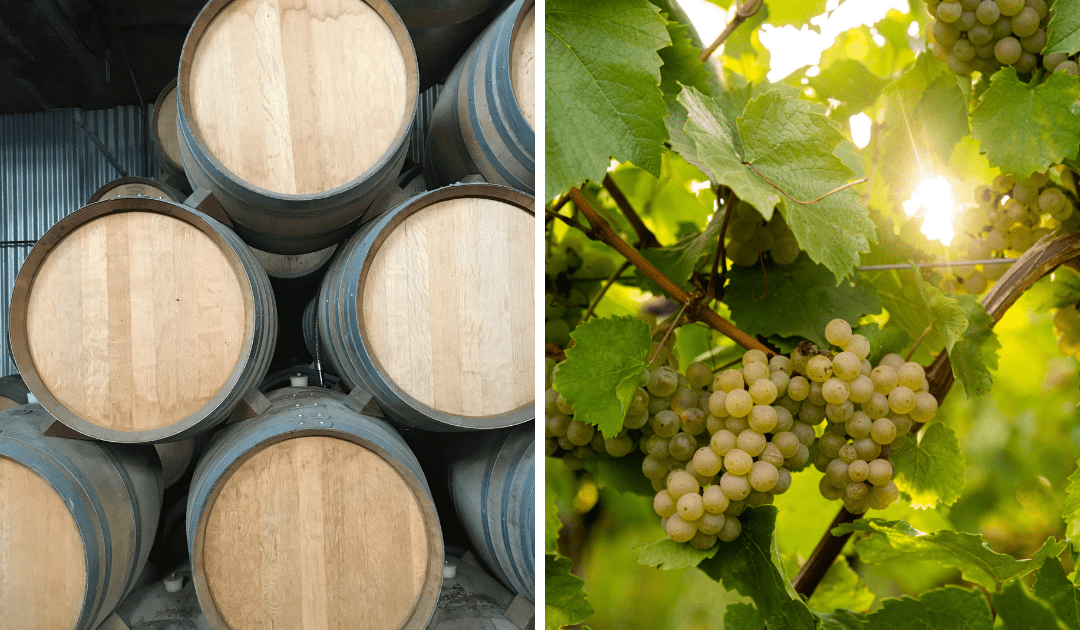
Pecorino
Pecorino wine is produced in the Marche and Abruzzo regions, just three hours from Rome, near the Apennines Mountain range. With the ability to grow at an altitude of 3,000 feet, Pecorino wine is produced from a hardy and resistant white grape that thrives in the cooler weather inland of the Adriatic coastline.
With an exceptional aroma and flavor, this versatile wine is suitable for a wide range of food pairings, including aperitifs, appetizers, main courses, cheeses, and desserts. Pecorino generally ages well and gains structure with taste and time. Because of this, it is often called the “red dressed in white” because of its similarities to red wine in its alcohol content and aging potential.
It is believed that the grapes of Pecorino were originally found growing naturally in Marche near the border of Lazio. In the early 1980s, Guido Cocci Grifoni, a winemaking pioneer, decided to implant these grapevines in the hills of Southern Le Marche, near the beautiful village of Offida – which you’ll visit when you join us on Italy’s Epicurean Journey!
Enjoy Piceno Wine Country at a Gambero Rosso award-winning, SlowWine family-run estate overlooking the endless rows of vineyards and olive groves. And that’s just one day on this 10-day journey through Marche!
Prosecco
With rapid growth in the last twenty years, Prosecco has beaten Pinot Grigio at the top of the list of Italy’s most well-known wines. This rapid growth has likely been brought on by the popularity of the fruity and refreshing Aperol Spritz cocktail, which uses Prosecco as a base.
Prosecco’s DOC territory extends to the lowlands of Veneto, one of Italy’s top wine-producing regions. In recent years, Prosecco has reached over half a billion bottles produced.
The DOCG territories are in the hills of Conegliano and Asolo, where Prosecco takes the “Superiore” name, marking it as the highest possible quality. Made from the glera grape, Prosecco has a history going back to Roman times and is appreciated for its fruity and fresh flavors.
Prosecco is produced using the Charmat method, where secondary fermentation occurs in large stainless steel tanks rather than individual bottles (like in Champagne). This method is more affordable and helps preserve the fresh, fruity character of the Glera grape. Prosecco is generally not aged for long, as it’s meant to be enjoyed young and fresh.
Of course, Prosecco isn’t hard to find in your local grocery store, but why not go straight to the source? On Northern Italian Delights, you’ll sip a glass of DOC Prosecco paired with award-winning organic cheese, looking out over the sprawling vineyards of the UNESCO Prosecco Hills! Join us on tour to eat and drink your way through Northern Italy without the crowds.
SAVE THIS POST FOR the next time you need a quick guide to ITALY’S Most famous white wines!
